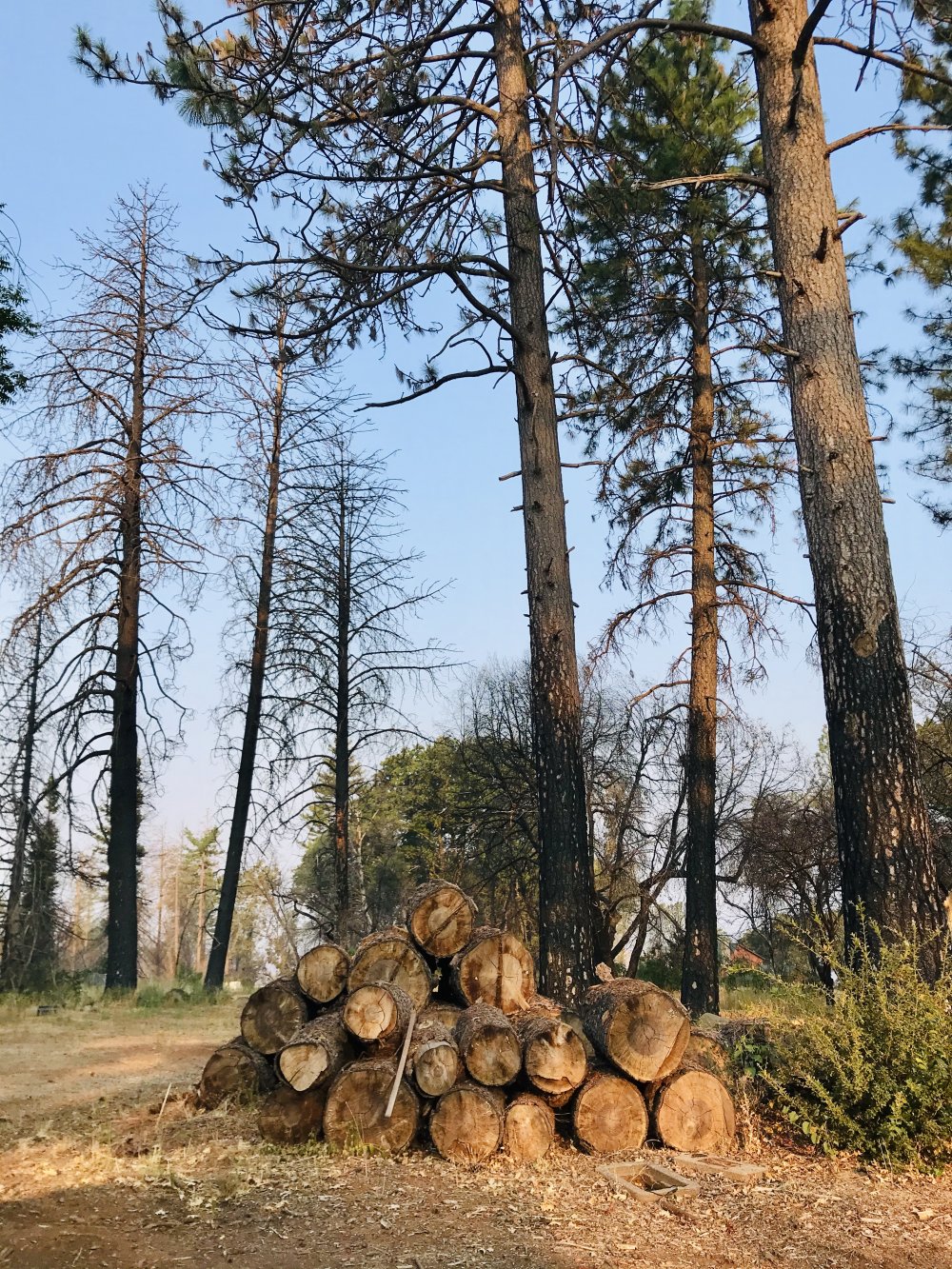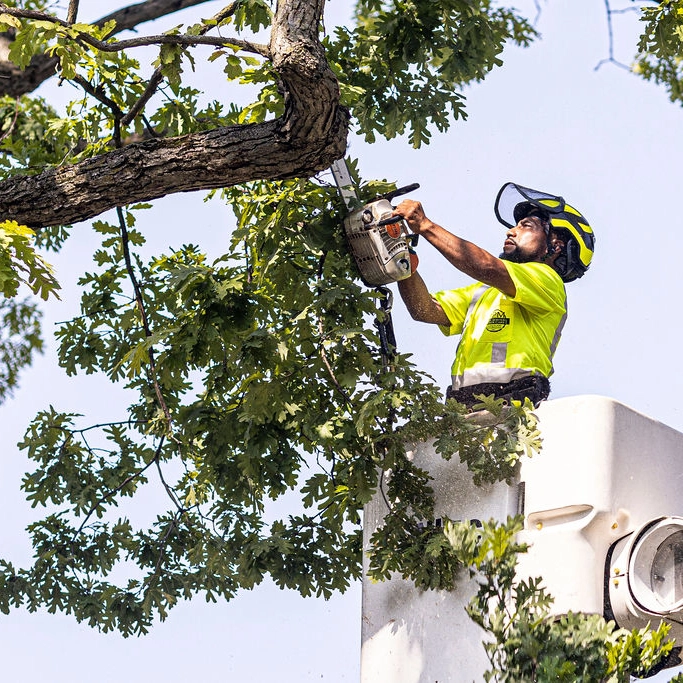The Significance of Specialist Tree Elimination for Preventing Prospective Risks
In today's interconnected landscapes, the value of expert tree elimination prolongs past simple looks, serving as a vital measure to avert prospective threats. Trained arborists possess the acumen to discern trees that may compromise security due to degeneration or architectural flaws.
Identifying Hazardous Trees
Recognizing hazardous trees is a vital aspect of making sure safety in both business and domestic settings. Trees, while providing ecological and visual benefits, can present considerable dangers if they are structurally unhealthy or jeopardized. Determining these trees requires an eager eye for information and an understanding of different indication that might indicate possible threat.

Origin health is an additional critical element; revealed roots, fungal growth around the base, or soil heaving can show instability. In addition, dead or hanging branches, usually described as "widow-makers," existing prompt risks as they can fall without caution.
Proficiency in Threat Evaluation
Understanding the warning signs of hazardous trees establishes the stage for educated risk assessment by professionals. By utilizing rigorous diagnostic methods, they can precisely evaluate the potential risks presented by a tree.
Specialist arborists are experienced at utilizing advanced devices and methods, including resistograph examinations and sonic tomography, to review the interior condition of trees. This clinical approach permits an accurate understanding of structural weak points or degeneration, enabling notified decision-making relating to tree removal or other treatments. In addition, their knowledge encompasses comprehending species-specific susceptabilities, which can influence danger assessments.
Additionally, arborists consider external elements such as dirt conditions, proximity to frameworks, and weather influences, which can intensify a tree's danger account. Their experience guarantees an all natural evaluation, integrating organic, ecological, and situational information to create a comprehensive danger assessment. This precise process is essential in guaranteeing and mitigating possible risks safety and security, emphasizing the essential function of professional assessment in tree monitoring.
Safety Procedures and Tools
Safety and security methods and tools are vital in the expert tree removal procedure, making sure that procedures are performed without danger to employees or home. Complying with stringent safety standards is important in mitigating the integral dangers connected with tree elimination tasks. Professional teams are trained to execute detailed precaution, including preserving a protected border around the worksite to stop unauthorized accessibility and prospective accidents.
Essential equipment plays an essential duty in securing tree elimination operations. Furthermore, the usage of setting up tools, such as pulleys, ropes, and harnesses, facilitates regulated tree felling, decreasing threats throughout the elimination process.
An extensive understanding of safety methods is vital for all personnel involved. Routine safety rundowns and drills are performed to reinforce awareness and preparedness for emergency situation scenarios. Professional groups are experienced in analyzing ecological problems, such as weather condition and surface, to change security procedures appropriately. This dedication to safety protocols and tools underscores the proficiency and diligence of expert tree elimination solutions in avoiding prospective threats.

Lessening Residential Or Commercial Property Damages
Invariably, lessening building damage is a basic objective of expert tree elimination solutions - Tree removal. The elaborate process of tree removal demands a tactical method to make certain that surrounding structures-- such as homes, garages, fencings, and energy lines-- remain unhurt. Professional arborists have the proficiency to analyze the tree's condition and its closeness to prospective dangers, using innovative strategies to minimize dangers
One crucial element is the implementation of exact reducing techniques, which calls for an eager understanding of tree physics and structural honesty. Specialists use regulated felling techniques to guide the tree's loss course, substantially decreasing the chance of security damage. Furthermore, making use of specific equipment, such as cranes and rigging systems, enables the safe taking apart of huge or precariously positioned trees in constrained rooms.
In addition, knowledgeable tree elimination experts conduct thorough website analyses to determine and attend to any kind of underlying problems that try this web-site might add to residential or commercial property damage, such as root intrusion or dirt instability. This proactive technique makes sure that the removal process is executed with very little disturbance to the existing landscape, guarding both the residential or commercial property and its aesthetic worth. By delegating tree elimination to professionals, building proprietors can feel confident that every preventative measure is taken to safeguard their investment.

Long-Term Wellness of Your Landscape
In the context of specialist tree removal, securing building is carefully linked to advertising the long-lasting health and wellness of your landscape. Trees, while valuable properties to any property, can also come to be responsibilities otherwise correctly preserved - Tree removal. Unhealthy, damaged, or poorly placed trees can endanger the stability of your landscape, influencing dirt wellness, taking on other vegetation for sources, and possibly causing the spread of pests and disease
Specialist tree removal ensures that just those trees click over here now that pose a hazard to your landscape's health are eliminated, thereby suffering the vitality of the remaining plants. Specialists evaluate each tree's condition and its connection with the surrounding setting, considering factors such as root spread, canopy protection, and closeness to other plants. By removing trees that are exceedingly affordable or harmful, experts help create a well balanced environment where all components of your landscape can flourish.
Moreover, the removal procedure itself is conducted with accuracy, minimizing damage to the surrounding location. This cautious strategy preserves dirt framework and stops unneeded disruption to the origin systems of nearby plants. Eventually, professional tree elimination contributes to a healthier, a lot more resilient landscape, guaranteeing its elegance and capability for several years ahead.
Conclusion
Specialist tree elimination plays a crucial function in maintaining safety and security and environmental health. By using and identifying dangerous trees proficiency in threat analysis, educated arborists efficiently protect against possible threats associated with structurally unsteady trees.
In today's interconnected landscapes, the value of specialist tree elimination expands past plain appearances, offering as an important procedure to avert possible hazards.Safety procedures and tools are More about the author critical in the expert tree elimination process, ensuring that operations are performed without threat to employees or home.Professional tree elimination makes sure that only those trees that position a threat to your landscape's wellness are gotten rid of, therefore sustaining the vitality of the staying vegetation.Specialist tree elimination plays an important duty in preserving safety and security and environmental health and wellness. By recognizing hazardous trees and employing competence in risk evaluation, trained arborists properly prevent prospective threats connected with structurally unstable trees.